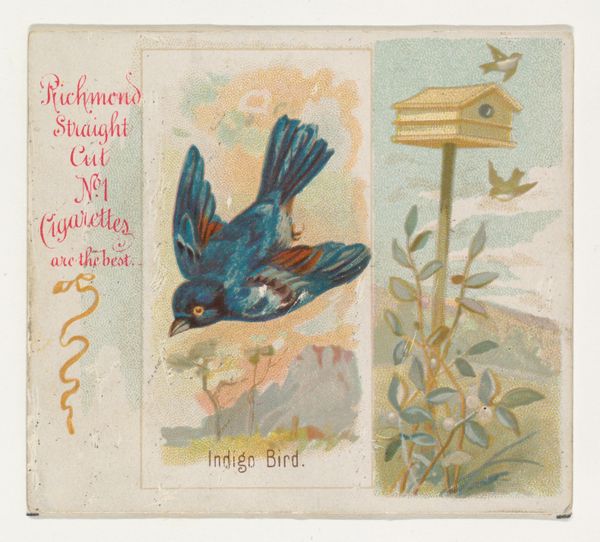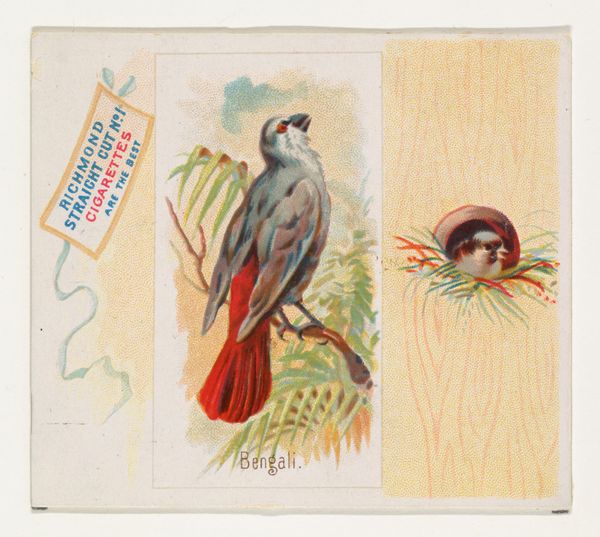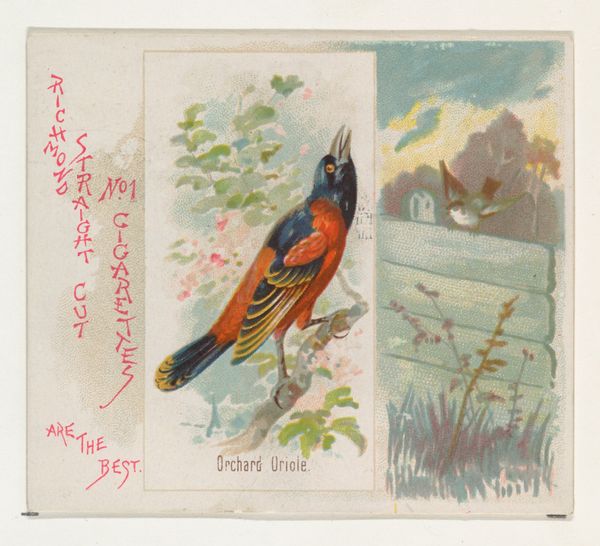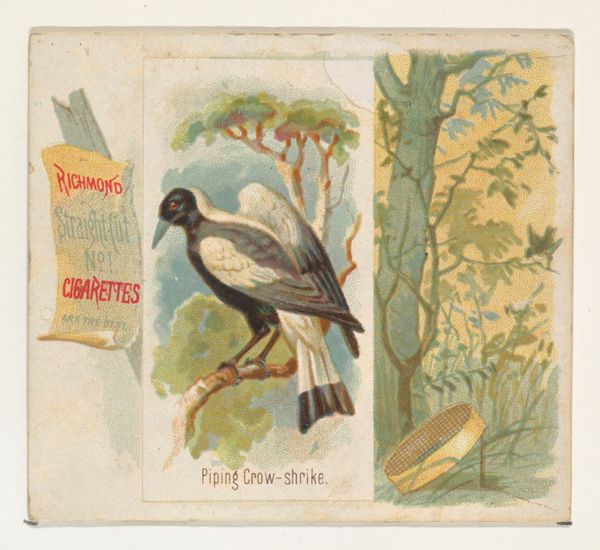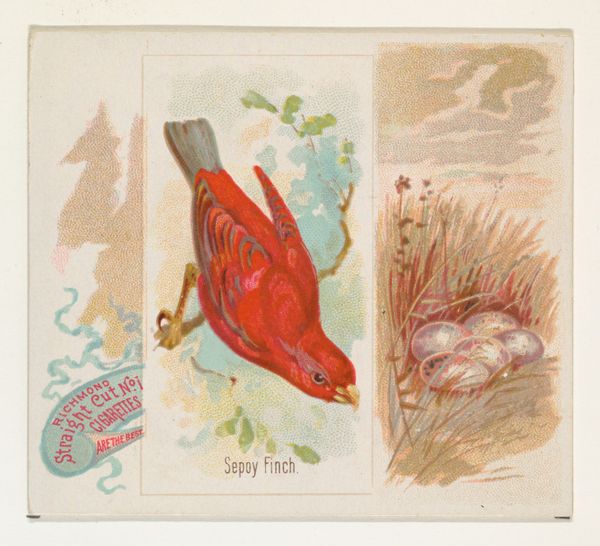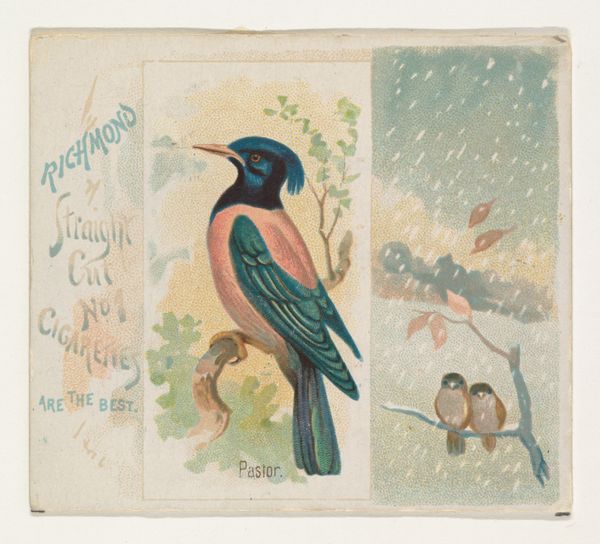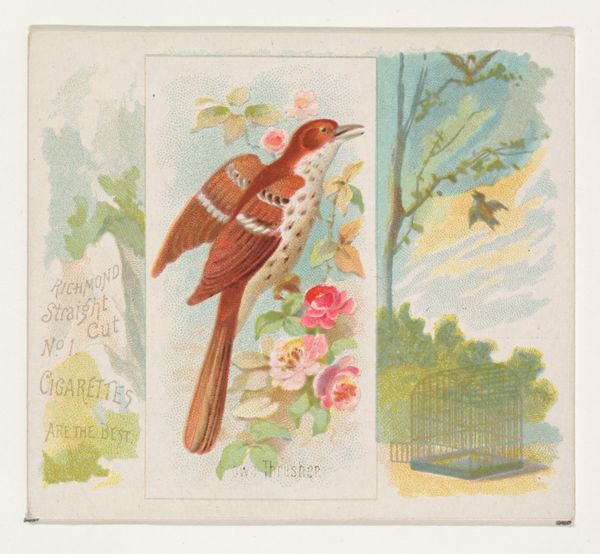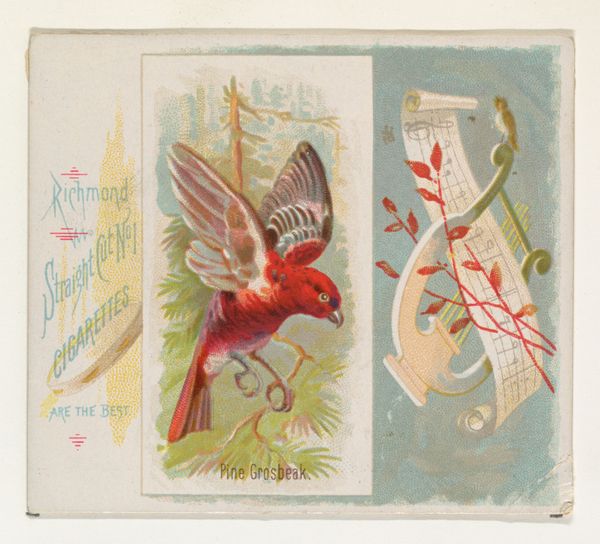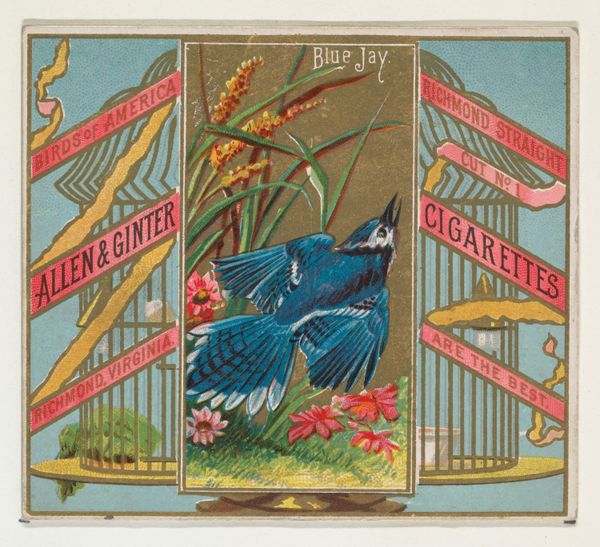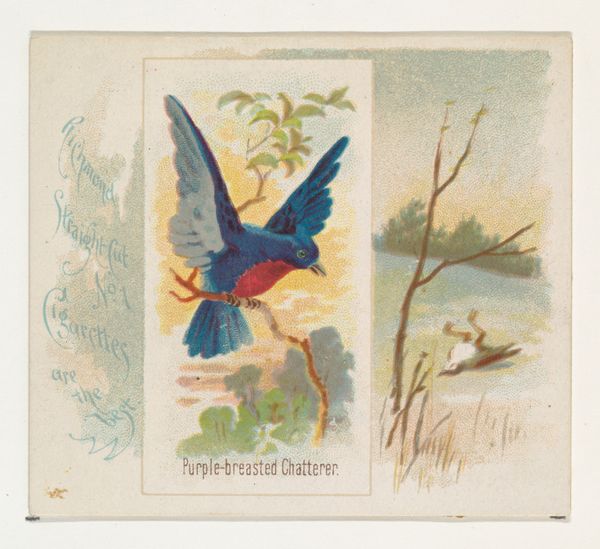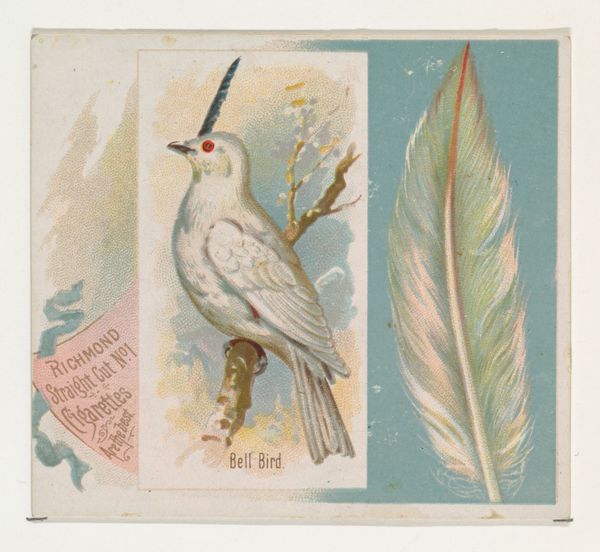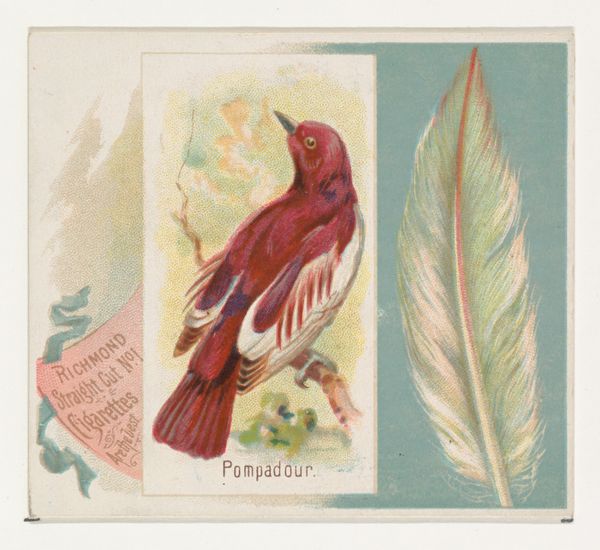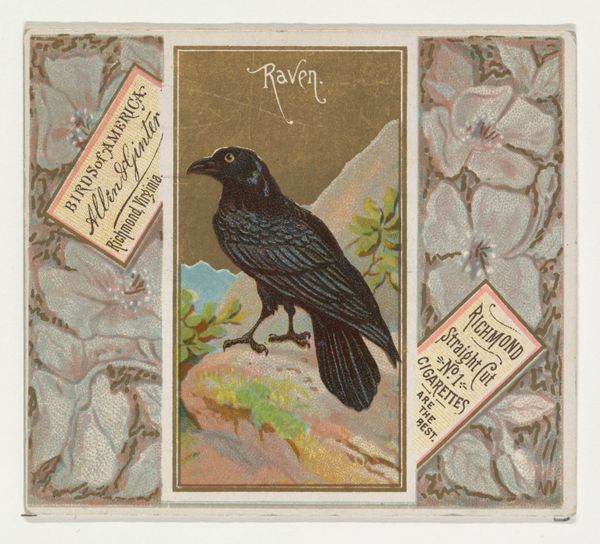
Huia, from the Song Birds of the World series (N42) for Allen & Ginter Cigarettes 1890
0:00
0:00
Dimensions: Sheet: 2 7/8 x 3 1/4 in. (7.3 x 8.3 cm)
Copyright: Public Domain
Curator: This delicate watercolor print, titled "Huia," comes to us from Allen & Ginter’s "Song Birds of the World" series, created around 1890. It’s a piece of ephemera, originally included in packs of cigarettes. Editor: Immediately, I’m struck by the juxtaposition of the naturalistic bird illustration against the almost surreal musical elements. There’s a strangeness to the composition. Curator: These trading cards offer a fascinating window into late 19th-century imperialist attitudes toward the natural world. These series exoticized locations through their representation of flora and fauna; objects of beauty consumed for capitalist intentions. Editor: The Huia bird itself, perched amidst flowering branches, becomes a potent symbol. The long beak, seemingly both delicate and strong, reminds me of adaptation and resilience. It's melancholic because the Huia is now extinct. We look at this beautiful bird with an ache. What does the pairing with musical notations suggest about nature as harmonious song, only to have the Huia bird silenced? Curator: It's interesting how you perceive melancholy; it reflects a contemporary understanding of extinction. However, at the time of its creation, the card likely celebrated the bird's exoticism and its "rarity," feeding into colonial fantasies without concern for the actual ecological impact of that view. The Huia was fetishized for its feathers, prized for adornment and trade, leading to its demise. The musical notations seem an ill-suited companion in retrospect. Editor: True. And the Art Nouveau style, visible in the flowing lines and the decorative elements, reinforces that sense of romanticizing nature, even as that romanticization contributed to its exploitation. Is it cultural memory that adds layers of discomfort? Curator: Exactly. And it is our role to unpack those complexities—to acknowledge the original context, but also confront the legacy of this representation. Today, a piece like this, beautiful as it is, serves as a stark reminder of loss. Editor: Yes, a symbol transformed through time and understanding. I see the Huia as a haunting reminder. Curator: I appreciate your attention to the transformative quality of symbols in time and place, while I'm most grateful for your focus on capitalism and colonization and how that context refigures the way that we perceive even the most aesthetically lovely art.
Comments
No comments
Be the first to comment and join the conversation on the ultimate creative platform.
